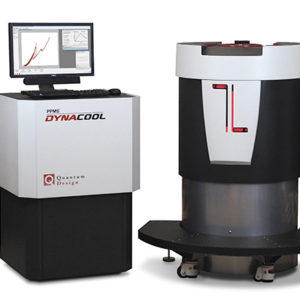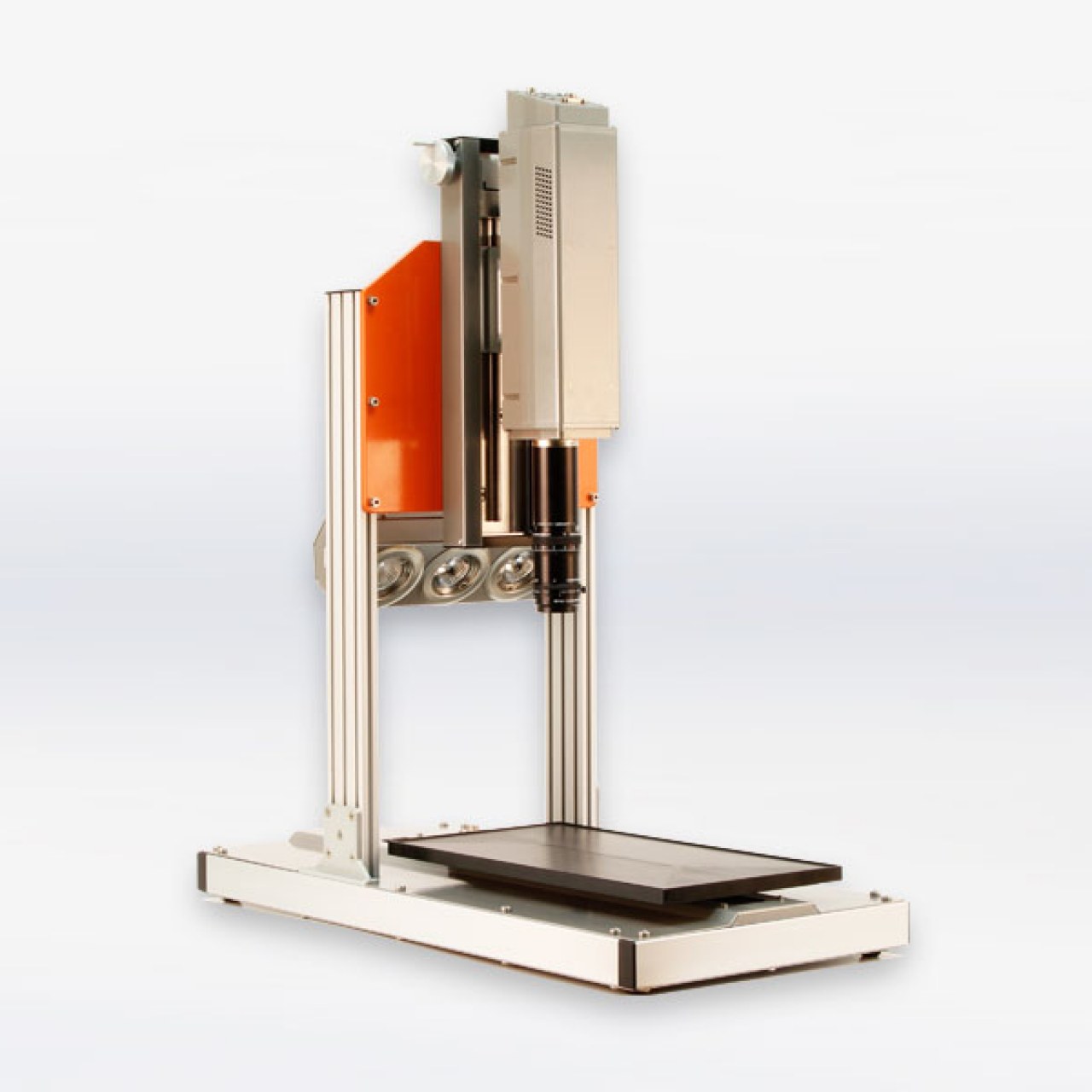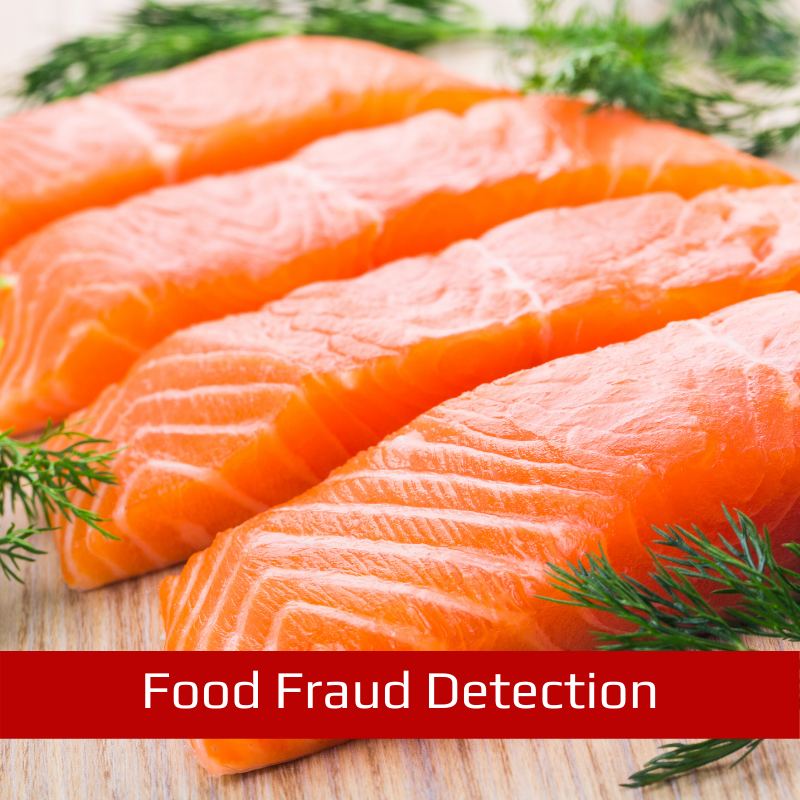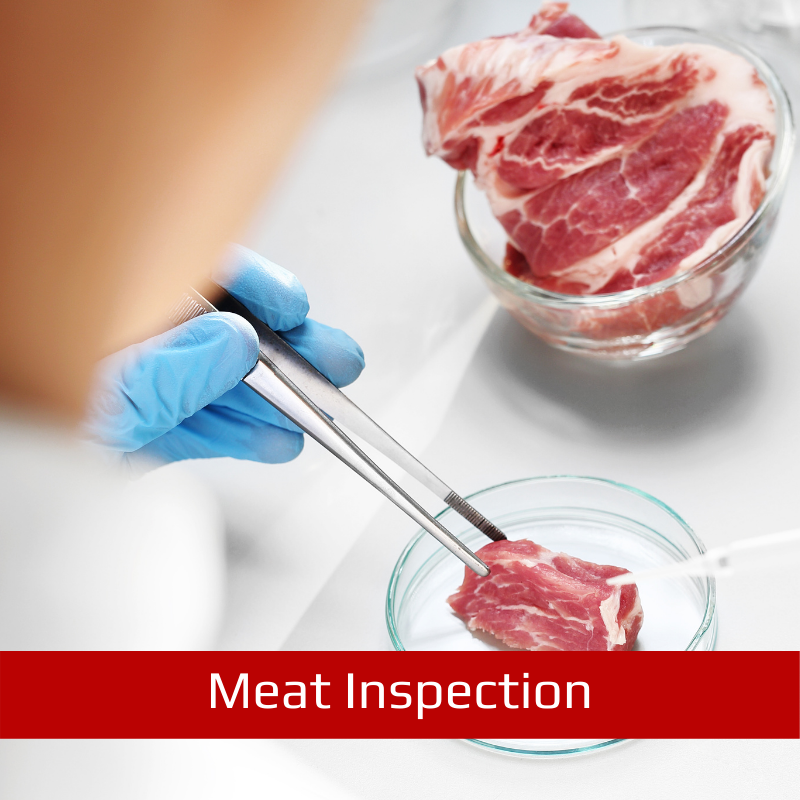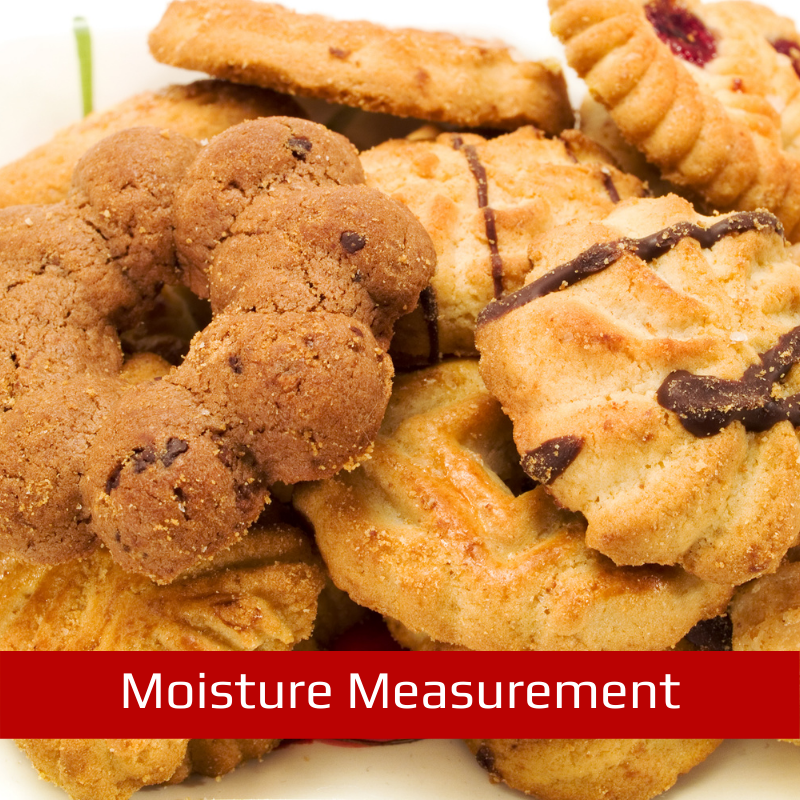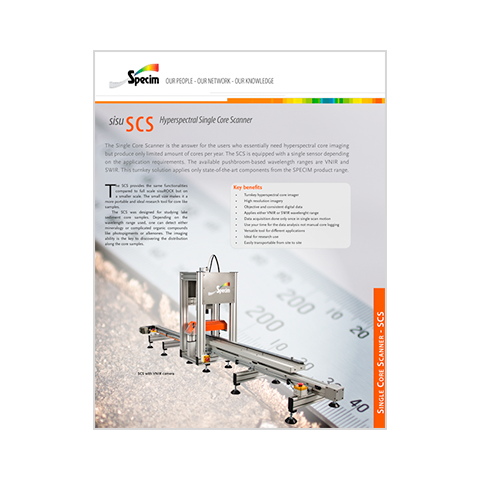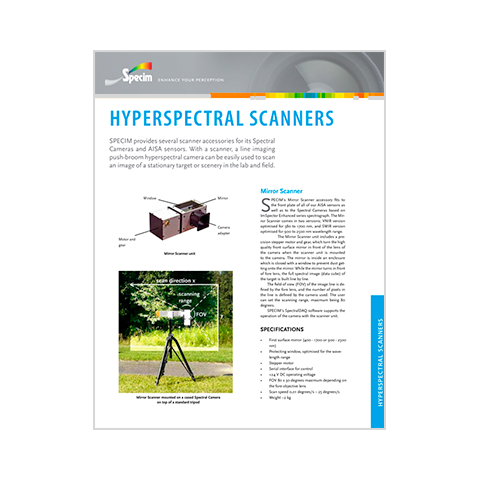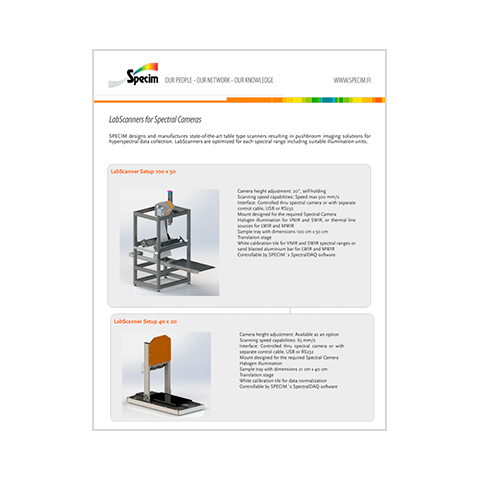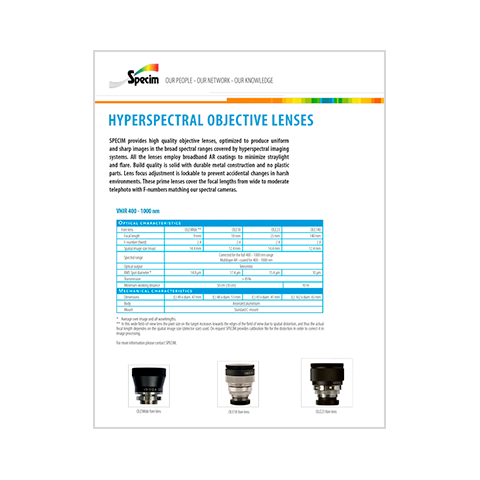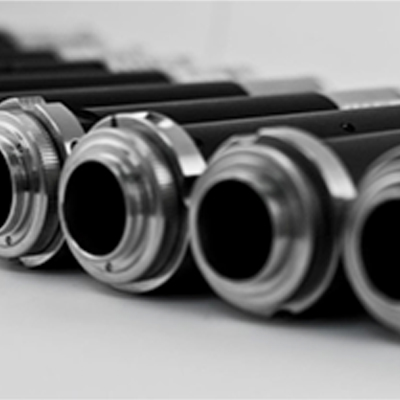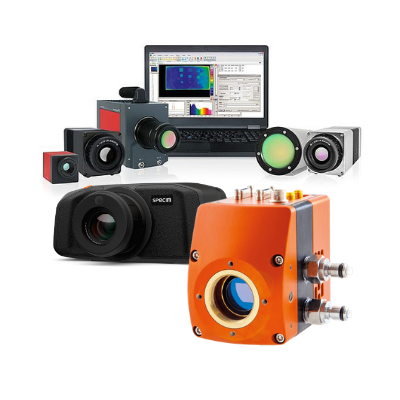- Features
- Videos
- Downloads
- Applications
- Related Products
- Contact
- Back To Spectroscopy
- Back To Optics
- Back To Hyperspectral
- Back To Cameras
- Back To X-Ray
- Back To Light Measurement
- Back To Characterisation
- Back To Electron Microscopy
- Back To Magnetometry
- Back To Ellipsometers
- Back To Cryogenics
- Back To Lake Shore
Specim Scanner Systems
Scanner accessories for Spectral Cameras and AISA sensors
As all of the Specim cameras operate according to the push-broom technique, some form of spatial scanning is required in order to built up the 2D image. In some scenarios however, this is not necessary – for example, in the case of a camera installed on an aircraft, the movement of the plane takes care of this requirement. However, for lab or field based analysis of static samples (food, vegetation etc) it is necessary to mount the camera on a scanner. For small size samples this is normally achieved with a lab scanner – which moves a sample tray underneath a stationary camera (looking down from above the sample). For larger samples (such as large paintings on the wall) the camera is moved relative to the object – either in a horizontal linear or rotary translation.
(Compatible with SPECIM hyperspectral objective lenses)
MODELS:
- 40 x 20 cm lab scanner
- 100 x 50 cm lab scanner
- RS10/RS50 rotary scanners (10 kg and 50 kg payloads)
- Mirror scanner
- 120 cm or 190 cm art scanner
FEATURES:
- Required for when neither the object or camera moves under normal conditions
- Scans either the object or the camera
- Lab or field based solutions
- Complementary accessories available (white reference calibration tiles, radiometric calibrations, illumination sources etc)
- Controllable through the Specim LUMO software




